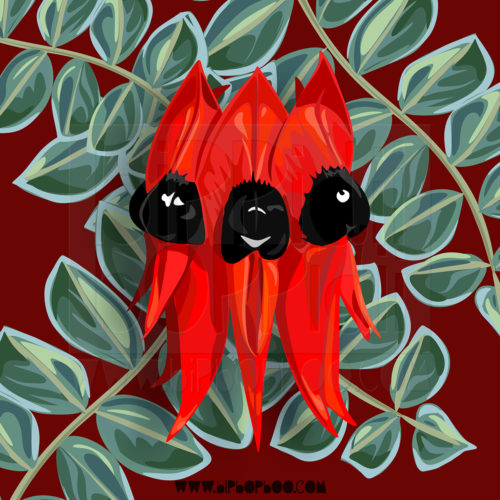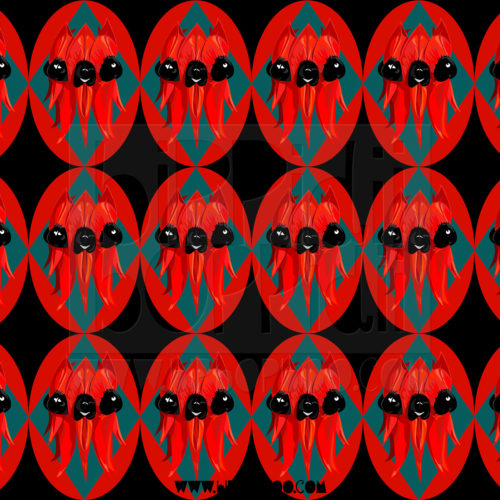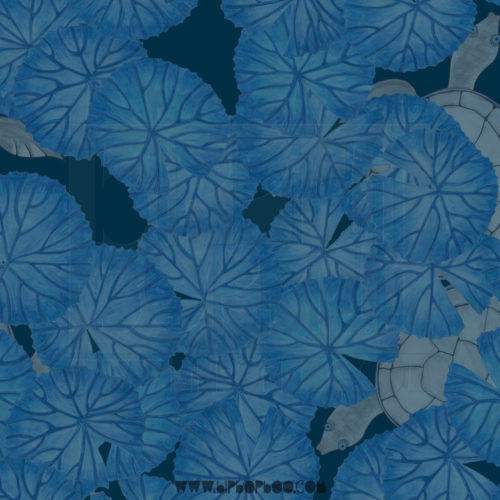Australian flowering natives
Australian wildflowers have enchanted generations of artists. Here are a few of my own enchantments.



Woolybutt
On my first day as an artist-in-the-park at the Territory Wildlife Park I walked a full lap of the park, seeking simply to familiarise myself with the spaces in which I might work. Along the way I found a wattle blossom in the centre of the track and was delighted by the rich oranges and yellows in the flower. While I might have passed this by in the search for a more iconic plant, it provided an invitation I could not refuse, and became the first design of my residency.






Sturt’s Desert Pea
The floral emblem for South Australia, Sturt’s Desert Peas, bloom against the ochre soil of the red centre, its flower complex, beautiful and strange. My parents grew them very successfully in their seaside front yard for a number of years until the grey nomad bug bit them too hard for such high maintenance gardening!



Callistemon
For all their success growing Sturt’s Desert Pea, my parents didn’t have so much luck with ‘bottlebrushes’. They planted them in our front yard on the farm where they steadfastly refused to gain any size much to my mother’s dismay.



Lily Lagoon/Turtle Lagoon/Midnight Turtles
Lilies are omnipresent in lagoons and billabongs across the Top End, making these places even more beautiful. Dragonflies, frogs and turtles can be found in abundance perched on lily pads or wending through long stalks beneath the water. Largely inspired by the lilies that run along the front of the dingo enclosure at the Territory Wildlife Park, the lilies in this design sometimes hide little pig nose turtles, while dragonflies hover and land between the flowers.




flannel flowers (for Maude)
‘Out the back’ of the farm I grew up on is a beautiful patch of scrub. As a child I loved seeing the wildflowers come out in the spring – eggs and bacon and the tiny rare spider lily. Here I fell in love with the soft and delicate flannel flower, which was – and still is – my favourite flower.
When I had finished this design it reminded me of a scene from my favourite movie, Harold and Maude. Harold tells Maude that the flower he would most like to be is a tiny white daisy, ‘because they are all the same’. Of course they are not, and Maude, wise old eccentric that she is, shows him that, like the flowers in this design, they are all quite as different as people are from one another.



calytrix calyx
Turkey bush provides beautiful splashes of pink to the dry season bush across the Top End. When the petals fall the protective calyx remains, each section sporting a long stiff ‘hair’ almost as long as the petals themselves. It was for this unique feature that the genus was named Calytrix.
I was intrigued by the beautiful shapes of the calyx, which seemed to form themselves seamlessly into an ogee pattern, guiding me towards a more abstract representation of one of my favourite plants.


forget Ned/by any other name
In the late 1920’s, bushranger Ned Kelly’s grave was dug up, along with the other prisoners buried on the grounds of Melbourne Gaol. A worker, or someone watching the spectacle made off with Kelly’s skull. It disappeared for almost thirty years before being found in an old safe in the early 1950’s.
Two decades later, the skull was put on display at the Old Melbourne Gaol. Six years on, it was stolen again and hasn’t been seen since.
Every now and then, someone pops up with a skull and says, ‘I think this might be it!’, but it never is. So far, anyway.
I wanted to do a sugar skull but make it Australian, so who’s skull better to use than the missing one of a violent bushranger who is said to have appreciated flowers.
Though it’s doubtful that Kelly would ever have come across a Sturt’s Desert Rose – the floral emblem of the Northern Territory – something about the combination worked: a story from down south, and a flower from up north.
